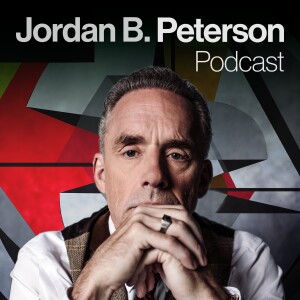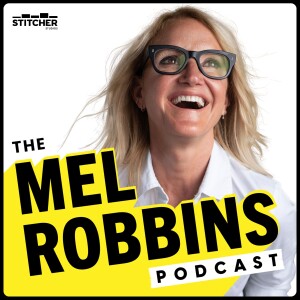
The Nonlinear Library: EA Forum
Education
Welcome to The Nonlinear Library, where we use Text-to-Speech software to convert the best writing from the Rationalist and EA communities into audio. This is: Pre-slaughter mortality of farmed shrimp, published by Hannah McKay on March 12, 2024 on The Effective Altruism Forum.Citation: McKay, H. and McAuliffe, W. (2024). Pre-slaughter mortality of farmed shrimp. Rethink Priorities.https://doi.org/10.17605/OSF.IO/W7MUZThe report is also available as apdf here.Executive summaryMortality rates are high in shrimp aquaculture, implying welfare threats are common.It is typical for ~50% of shrimp to die before reaching slaughter age.This equates to around 1.2 billion premature deaths a day on average.Mortality varies among species; prioritizing interventions should take this into account.Because of high pre-slaughter mortality (~81%), Macrobrachium shrimp represent a larger share of farmed shrimp than slaughtered shrimp.Most individual deaths are P. vannamei, despite having the lowest mortality rate.More larvae die than any other life stage, but this does not necessarily mean efforts should focus on them.Uncertainty remains about whether larval shrimp are sentient - they are planktonic, so do not make autonomous decisions.Minimizing larval deaths could cause compensatory deaths in later life stages (e.g., ensuring weaker larvae survive, who then die from later harsh conditions).Interventions should likely concentrate on the ongrowing stage (postlarval and juvenile-subadult shrimp), where there are still tens of billions of deaths.There are several causes of mortality and differences between farm types.Most causes are likely a combination of intrinsic shrimp traits (e.g., young shrimp are sensitive to environmental fluctuations), farming practices, and diseases.Disease is a main cause throughout life, but it is often a downstream effect of issues that farmers have some control over (e.g., poor water quality).Variation among reported figures, especially that more intensive farms have fewer deaths, suggests many factors are at play and that some are controllable.The effects of reducing early mortality on industry trajectory are uncertain.The number of shrimp born may decrease if farmers must produce fixed output. But shrimp would live longer, increasing the chances for negative experiences.However, consumer demand has historically outstripped supply, so the industry may grow if it had better control of conditions causing mortality.If reduced deaths come from intensification of practices, more shrimp may be reared in conditions that can harm welfare (e.g., high stocking densities).Pre-slaughter mortality cannot depict total welfare because it misses nonfatal effects.Mortality is only a lower-bound proxy of how many shrimp suffer negative welfare.Premature mortality is more appropriate as one indicator among many that a welfare reform was successful, rather than an end in itself.Pre-slaughter mortality data is limited and non-uniform.Reports should clarify whether mass die-off events were excluded from mortality estimates and if rates are based on intuition from experience or empirical studies.Box 1: Shrimp aquaculture terminologyThe terms 'shrimp' and 'prawn' are often used interchangeably. The two terms do not reliably track any phylogenetic differences between species. Here, we use only the term "shrimp", covering both shrimp and prawns. Note that members of the family Artemiidae are commonly referred to as "brine shrimp" but are not decapods and so are beyond the present scope.We opt for the use of Penaues vannamei over Litopenaeus vannamei (to which this species is often referred), due to recognition of the former but not the latter nomenclature by ITIS, WorMS, and the Food and Agriculture Organization of the United Nations (FAO) ASFIS List of Species for Fishery Statistics Purposes.The shrimp farming industry uses many terms usually associated with agriculture - for example, 'crops' for a group o...
More Episodes
EA - EAGx Africa Event Interest Form: Looking forward to hosting an EAGx event in Africa! by Hayley Martin
 2023-11-23
2023-11-23
EA - The passing of Sebastian Lodemann by ClaireB
 2023-11-23
2023-11-23
EA - A Thanksgiving gratitude post to EA by Joy Bittner
 2023-11-23
2023-11-23
EA - A fund to help prevent violence against women and girls by Akhil
 2023-11-23
2023-11-23
EA - How to publish research in peer-reviewed journals by Ren Springlea
 2023-11-23
2023-11-23
EA - GWWC is funding constrained (and prefers broad-base support) by Luke Freeman
 2023-11-23
2023-11-23
EA - AMA: GWWC research team by Sjir Hoeijmakers
 2023-11-22
2023-11-22
EA - Donation Election rewards by Will Howard
 2023-11-22
2023-11-22
EA - GWWC's evaluations of evaluators by Sjir Hoeijmakers
 2023-11-22
2023-11-22
EA - 'Why not effective altruism?' - Richard Y. Chappell by Pablo
 2023-11-22
2023-11-22
EA - Reflections on Bottlenecks Facing Potential African EAs by Zakariyau Yusuf
 2023-11-22
2023-11-22
EA - GiveWell's 2023 recommendations to donors by GiveWell
 2023-11-22
2023-11-22
EA - Introducing Dialogues + Donation Debate Week by tobytrem
 2023-11-22
2023-11-22
EA - Visuals for EA-aligned Research by JordanStone
 2023-11-22
2023-11-22
EA - Sam Altman returning as OpenAI CEO "in principle" by Fermi-Dirac Distribution
 2023-11-22
2023-11-22
EA - The Role of Behavioural Science in Effective Altruism by Emily Grundy
 2023-11-22
2023-11-22
EA - Impactful Animal Advocacy: Building Community Infrastructure by Impactful Animal Advocacy
 2023-11-22
2023-11-22
EA - A review of GiveWell's discount rate by Rethink Priorities
 2023-11-21
2023-11-21
EA - Rethink Priorities needs your support. Here's what we'd do with it. by Peter Wildeford
 2023-11-21
2023-11-21
EA - Funding priorities at the Good Food Institute Europe: what additional impact will be created by marginal grants to GFI Europe? by emilygjohnson
 2023-11-21
2023-11-21
Create your
podcast in
minutes
- Full-featured podcast site
- Unlimited storage and bandwidth
- Comprehensive podcast stats
- Distribute to Apple Podcasts, Spotify, and more
- Make money with your podcast
It is Free
You may also like

Mayo Clinic Talks


The Saad Truth with Dr. Saad


Positive Thinking Mind


The Jordan B. Peterson Podcast


The Mel Robbins Podcast


- Privacy Policy
- Cookie Policy
- Terms of Use
- Consent Preferences
- Copyright © 2015-2024 Podbean.com


 iOS
iOS Android
Android